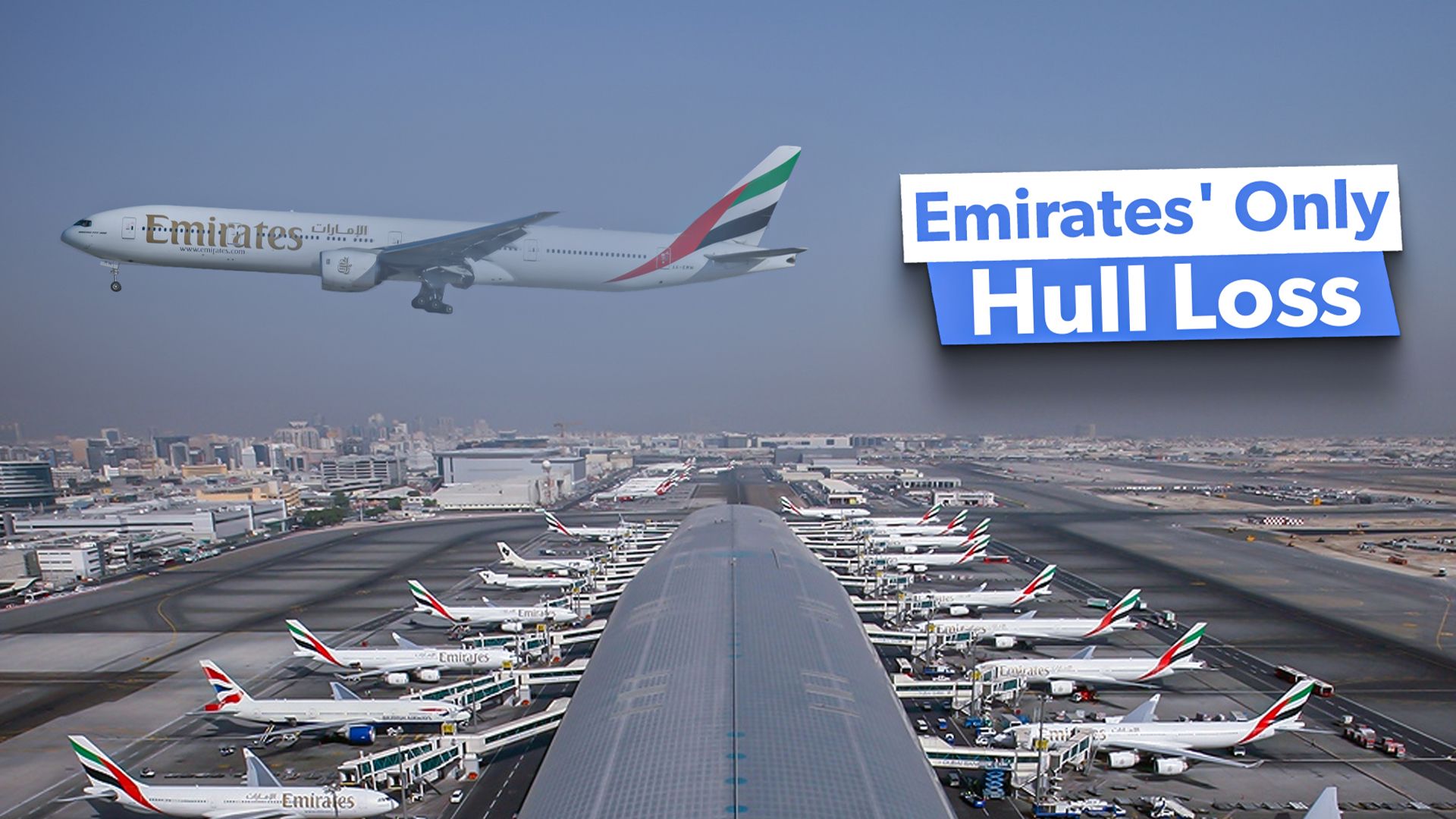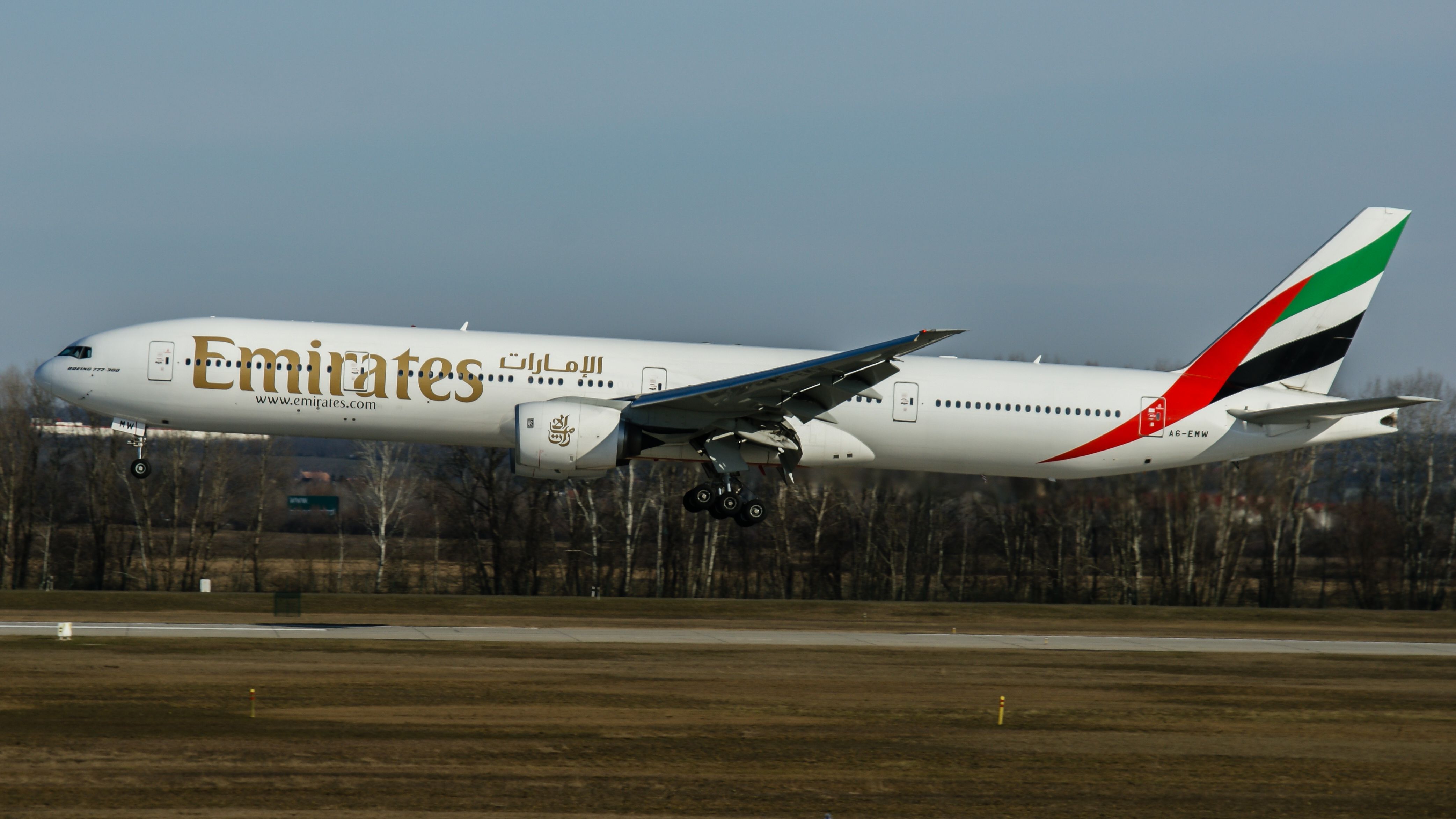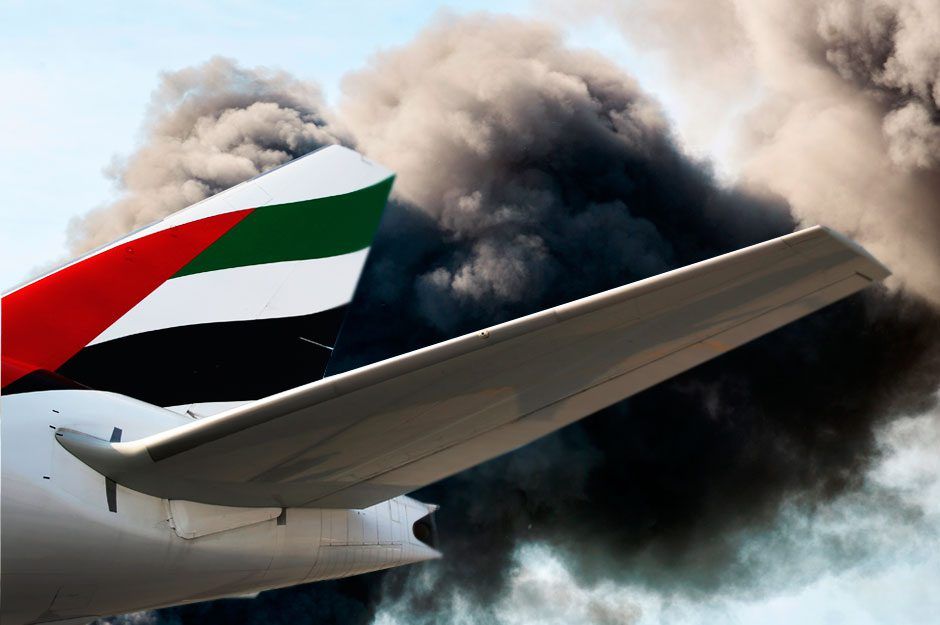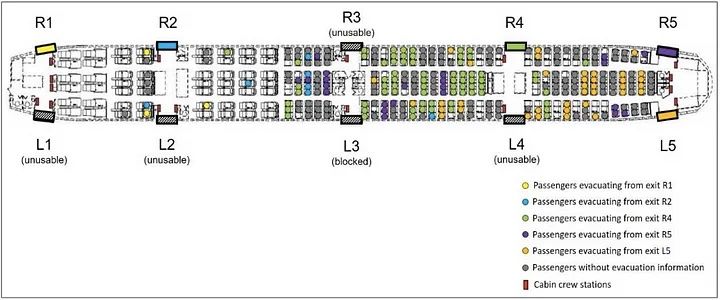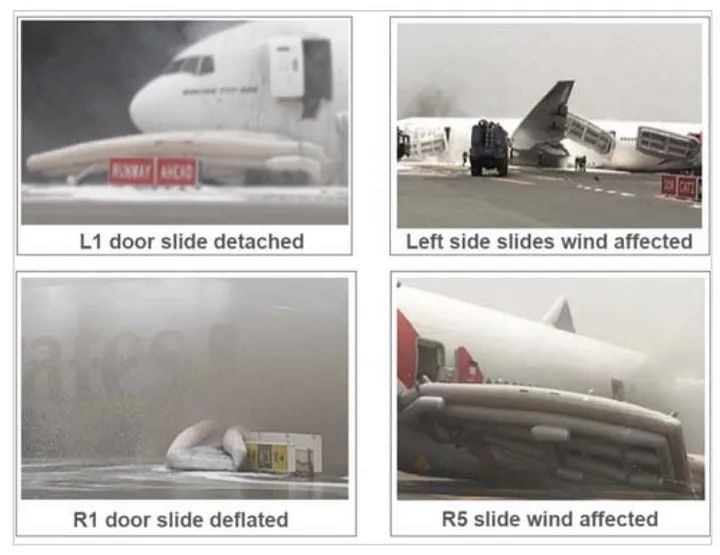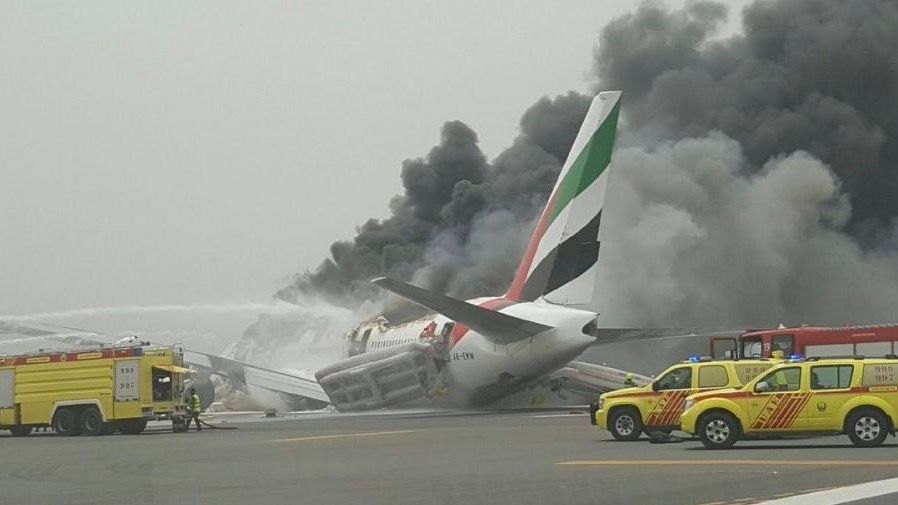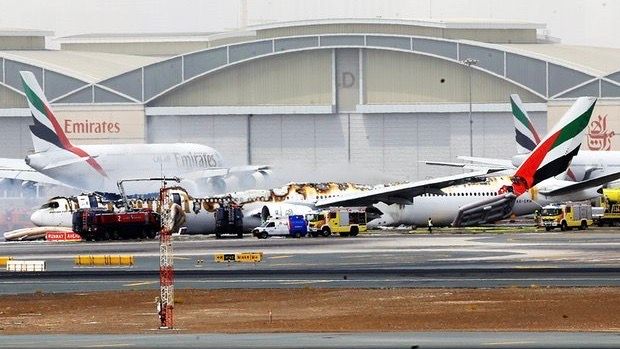Summary
- Approach & landing were initially normal, but wind shear caused issues on final approach.
- The crew attempted a go-around but autothrottle did not respond, causing impact on the runway.
- Cabin crew efficiently managed evacuation despite issues with evacuation slides
It was August 3rd, 2016. Emirates Flight 521 had left Thiruvananthapuram International Airport in India, almost half an hour behind schedule and was due to land back in Dubai International Airport at 12:24. The Boeing 777-300 had 282 passengers on board and two pilots and 16 cabin crew. The cabin crew were aged between 22 and 36 years. There were 14 female cabin crew and two male cabin crew. They had experience of between five months and eleven years.
On approach to landing
The approach and landing looked normal and no emergency was declared. At 12:37, wind shear affected the aircraft’s airspeed late in the final approach. The aircraft touched down but just as they did, a warning sounded in the cockpit saying ‘long landing’. The crew initiated a go around. The tower told them to climb to 4,000 feet and this was acknowledged. Shortly after, the tower told the next incoming flight to go around and summonsed the emergency services.
The Boeing 777 briefly became airborne. The go-around automation is inhibited after touchdown, although the undercarriage was retracted and flap settings reduced, the autothrottle remained unchanged. Their airspeed decreased and they were moving back towards the ground. The flight crew manually advanced the autothrottle, but it was too late.
What happened next?
The aircraft impacted the runway. The rear of the fuselage struck first and the aircraft slid along the runway 2,600 feet. The landing gear was partly retracted. The number two engine had detached. Firefighters arrived at the scene within 90 seconds. The right wing of the aircraft was on fire and parts had become detached from the aircraft.
In the cabin, there was minor damage but the impact caused the jumpseat at L1 to collapse and fold downwards. The cockpit door had opened and the window blinds in first class had fallen down. Some oxygen masks had deployed. An air vent grill at the rear of the cabin had fallen off. Fire could be seen at the number two engine and the lower section of the number one engine. Black smoke could be seen coming from the lower fuselage.
Some passengers had already unfastened their seat belts and left their seats, causing the cabin crew to announce for passengers to remain seated. Passengers were getting their belongings out of the lockers and demanded that the doors were opened. There was a lot of noise in the cabin where passengers were shouting and panicking.
Evacuating the aircraft
The cabin crew saw white smoke in the cabin, which then turned gray and got more dense. They heard the “ATTENTION CREW AT STATIONS” call and stood at their doors. One minute later the captain said “EVACUATION”. The cabin crew repeatedly shouted for passengers to “Leave everything behind” but the passengers still proceeded with their luggage.
Image: GCCA
The cabin crew member at door one left (L1) could not open her door fully, so the senior cabin crew member (SCCM) and the crew member at R1 helped her. They opened the door and the slide deployed but was caught in a gust of wind and detached from the aircraft, falling to the taxiway below. She blocked the exit. The slide at R1 deployed but the wind blew it upwards, so the exit was blocked and passengers were directed to R2.
Slide issues
Later, the R1 slide became stable and was used for evacuation for two minutes until it was deflated when it hit a sign on the taxiway. The exit was then blocked. L2 had the same issue and the exit was blocked. The door at R2 was opened and the slide deployed, but there was dense smoke in the area, so the passengers were redirected. Once the smoke had cleared, the exit was useable.
Photos: GCAA
L3 had blocked her door as there was smoke and dust outside and redirected people to R2. R3 opened their door, but the slide ramp did not deploy. There was fire and smoke outside, so they closed the exit and redirected passengers to the rear of the cabin. L4 opened the exit and the slide deployed, but again the wind pushed the slide against the fuselage, so they had to block the exit and redirect.
The evacuation continued
R4 did not hear the evacuation command because of the noise and chaos in the cabin, but opened her door when she saw the L4 crew open their door. The R4 slide was used until the slide bowed and had filled with fire-fighting foam. R4 then jumped down the slide to help passengers egress. After 40 seconds, R4 climbed back into the cabin to continue the evacuation.
The slide at L5 deployed and passengers evacuated until there was no one on the slide and the wind again made it unusable. At R5, the slide deployed but was twisted in the gusty conditions until a firefighter stabilized it. The cabin crew continued to shout their commands :
“LEAVE EVERYTHING BEHIND!”
Cabin Crew commands Flight 512
Other issues
Passengers continued to take their baggage with them despite the crew’s instructions. A family had lost their daughter in the chaos and were blocking the aisles. One of the cabin crew had to tell them to leave the aircraft and that they would take care of the girl. Another passenger froze and was very emotional and caused an obstruction to the evacuation. A cabin crew had to remove her and guide her to the exit.
An explosion
All cabin crew at the rear evacuated 25 seconds after the last passenger. The L1 crew member used the megaphone to tell the remaining crew to evacuate. The captain, the SCCM and two crew members donned their smoke hoods (PBE) to check for remaining passengers. There was some concern as the 7-year-old girl had become separated from her family.
Nine minutes and 40 seconds after the aircraft had come to a halt, there was an explosion as the center wing fuel tank ignited. This lifted part of the cabin floor allowing smoke and fire in the cabin. Thick black smoke poured from the exits. The captain and remaining crew onboard had to halt their search and evacuate.
The thick smoke forced the captain and SCCM into the cockpit to attempt to evacuate from the cockpit windows, but they could not find the escape ropes in the smoke. So they jumped from the L1 door onto the detached but inflated slide below. The evacuation had taken six minutes and 30 seconds.
Surviving the evacuation
Several passengers stayed in the vicinity of the aircraft and were taking photos and videos of the burning wreck. Eventually, the cabin crew moved them away from the aircraft to a nearby hangar, that became a triage and assembly area. Forty-five minutes later, the passengers were taken to the survivors’ reception center.
All 282 passengers and 18 crew survived the accident. Sadly one firefighter died on the ground. Five firefighters and two police officers were injured. There were 21 injuries among the passengers. The senior crew member was seriously injured along with three cabin crew. They received serious back injuries caused by the impact. Six cabin crew had minor injuries. All of the crew were assessed for post-traumatic stress.
The airport was closed for five and a half hours and flights were diverted. It took 16 hours to put out the fire completely and was Emirates only hull loss, gutted by the fire.
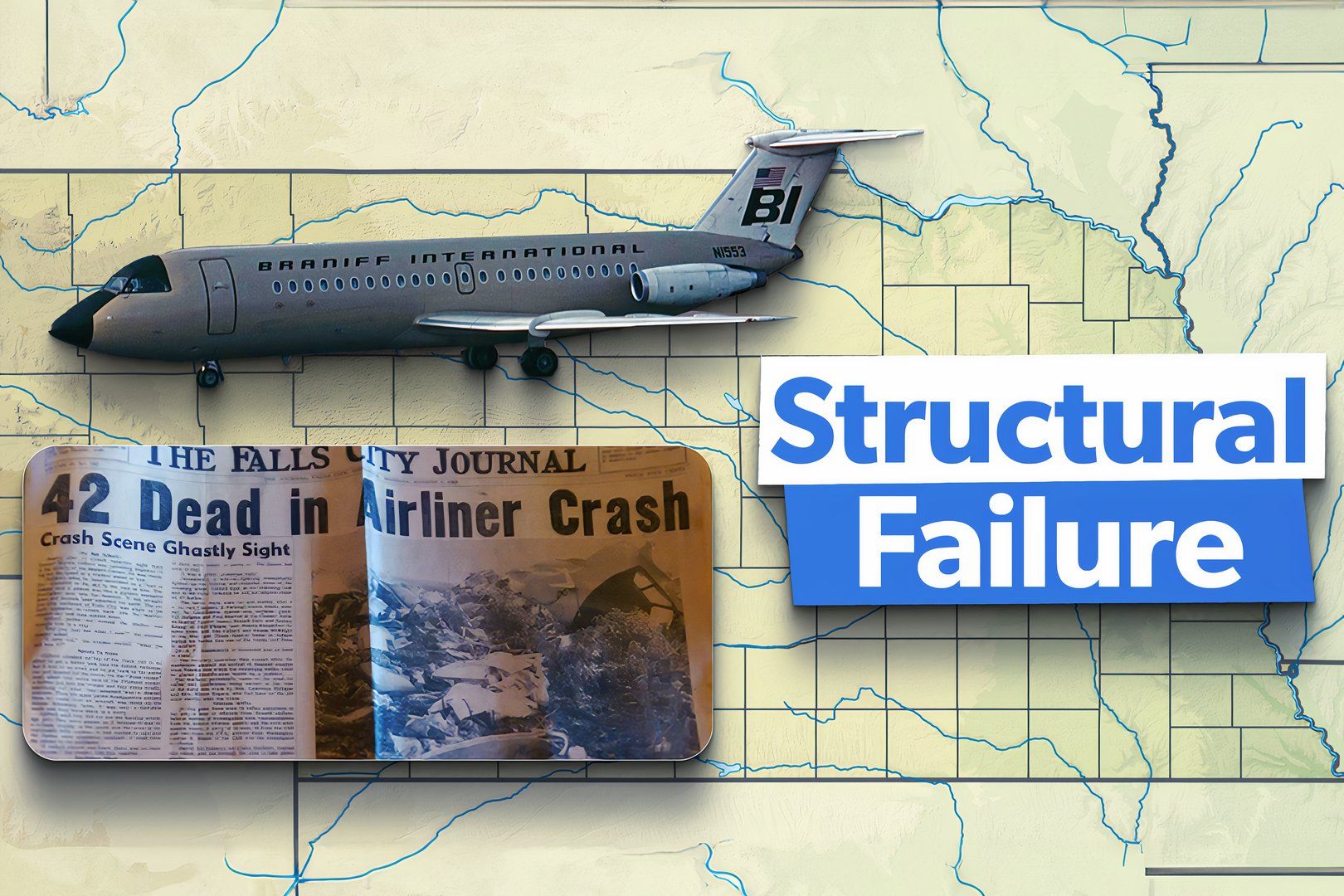
Related
Braniff International Airways Flight 250: A Cabin Crew Perspective
Chasing the storm had fatal consequences.
The cause of the accident
The GCAA final report said:
The report also says:
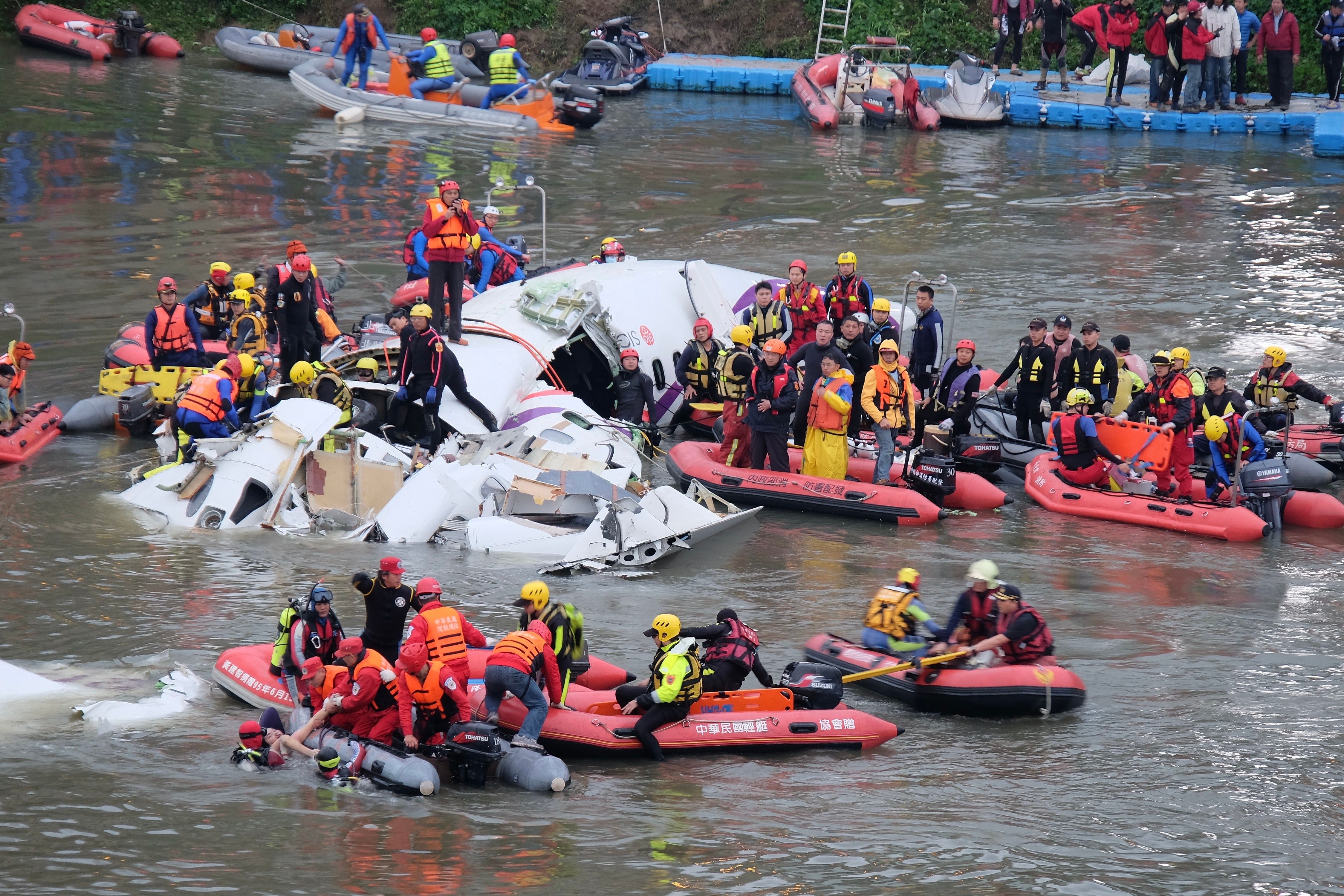
Related
TransAsia Airways Flight 235 – A Cabin Crew Perspective
How did a turboprop airliner crash into a highway just minutes after takeoff?

